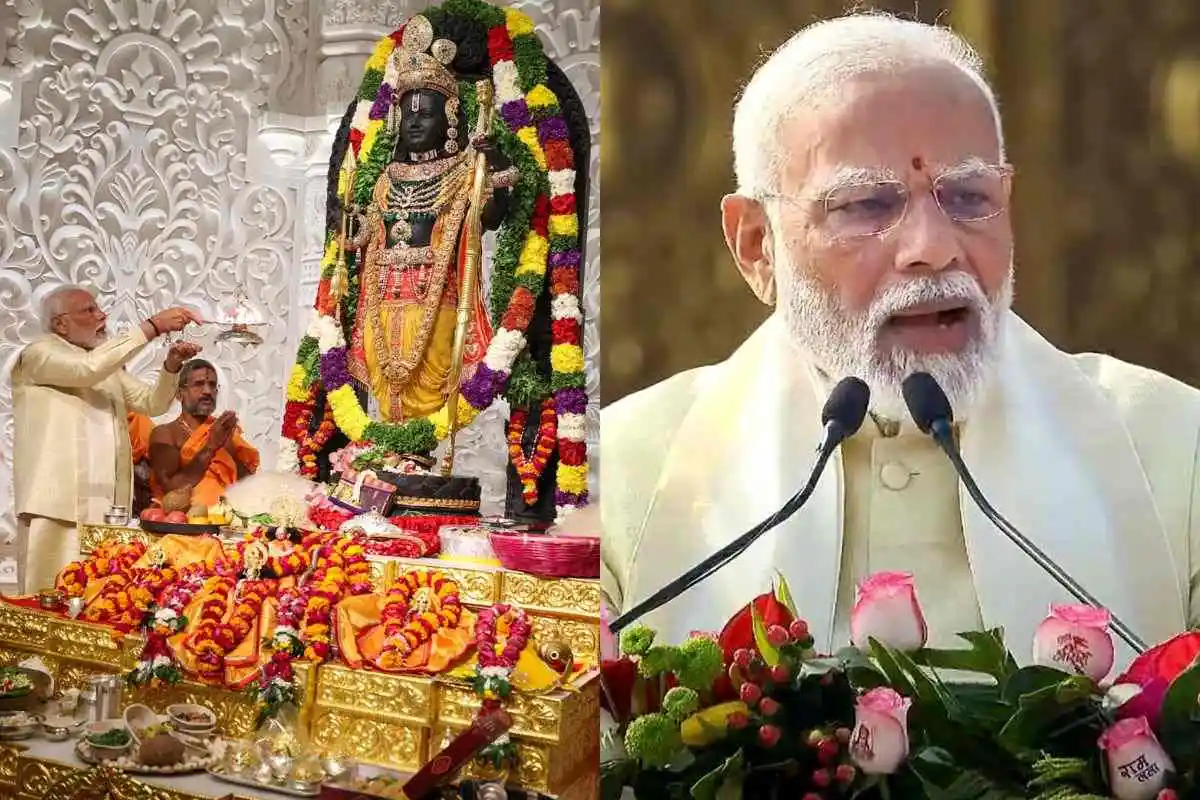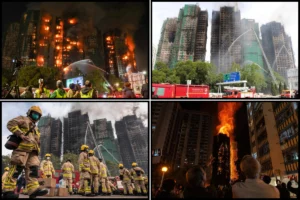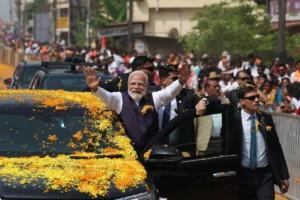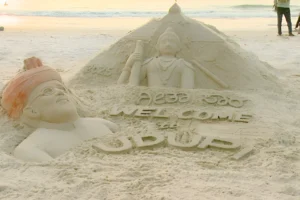
PM Modi’s historic address in Ayodhya
How PM Modi’s Ram Temple Address Reflected His Ideology and Vision for India
Prime Minister Narendra Modi’s address at the inauguration of the Ram temple in Ayodhya on January 22, 2024 was a historic moment for India and its people. The PM described the event as the beginning of a new era in the history of the Indian civilization, where the country has broken free of the shackles of slavery and the mentality of appeasement. He also outlined his vision of India as a modern, inclusive, and prosperous nation, where every citizen has equal rights and self-respect.
The PM’s address was not only a celebration of the long-awaited construction of the Ram temple, but also a reflection of his political ideology and philosophy. He invoked the ideals of Lord Ram, who is revered as the epitome of righteousness, justice, and compassion, and said that his life and teachings are a source of inspiration for every Indian. He also said that the Ram temple is a symbol of India’s philosophy and national consciousness, and that it represents the unity and diversity of the country.
The PM also emphasized the importance of social harmony and national integration, and said that the temple was built in accordance with the law and the verdict of the Supreme Court. He praised the maturity and wisdom of the Indian society, which resolved the decades-long dispute peacefully and amicably. He said that the temple is not only a place of worship, but also a cultural and educational center, where the values and traditions of India will be propagated.
The PM also linked the temple to his vision of a self-reliant and confident India, which is ready to take its rightful place in the world. He said that the temple is a testimony to the power of collective will and determination. He said that the temple will inspire the nation to overcome every challenge and achieve every goal.

The other significant points made in PM’s address were:
The PM referred to several characters and episodes from the Ramayan, such as Shabri, Nishad king Guh, Jatayu, and the squirrel, to illustrate the values of devotion, friendship, sacrifice, and service that Lord Ram embodied and inspired. He also unveiled a statue of Jatayu, the mythical bird who tried to save Sita from Ravan, on the temple premises
The PM recalled the contributions of various saints, seers, leaders, and activists who dedicated their lives to the cause of the Ram temple, and paid homage to them. He also acknowledged the role of the judiciary, the government, and the civil society in facilitating the peaceful resolution of the dispute
The PM highlighted the significance of the temple for the cultural and spiritual heritage of India, and said that it will be a center of learning and research on the life and teachings of Lord Ram. He also said that the temple will showcase the ancient art, architecture, and craftsmanship of India
The PM connected the temple to his vision of a ‘New India’, which is based on the principles of self-reliance, inclusiveness, and empowerment. He said that the temple will motivate the nation to work towards the welfare of the poor, the farmers, the women, the youth, and the marginalized sections of the society
The PM also asserted India’s role as a responsible and influential global player, and said that the temple will send a message of peace, harmony, and brotherhood to the world. He said that India is committed to the ideals of the United Nations and the welfare of humanity
Overall, the PM’s address was a powerful and eloquent expression of his worldview and his aspirations for India. It was a message of hope and optimism, of pride and dignity, of faith and devotion. It was a message that resonated with millions of Indians, who saw the temple as a fulfillment of their dreams and a manifestation of their identity. It was a message that also conveyed to the world that India is a vibrant and dynamic democracy, where the past and the present coexist harmoniously, and where the future is bright and promising.



















